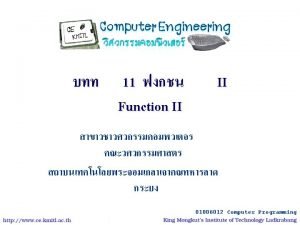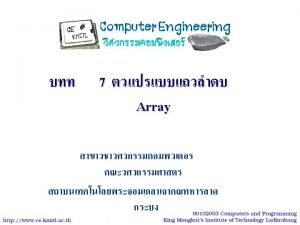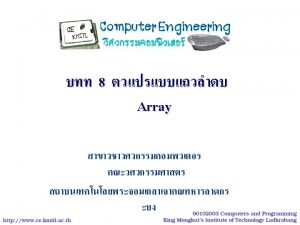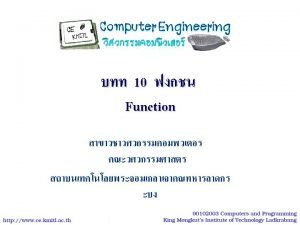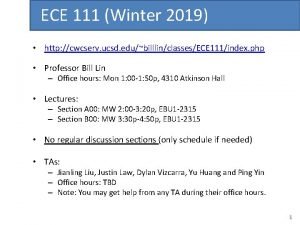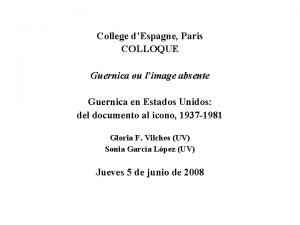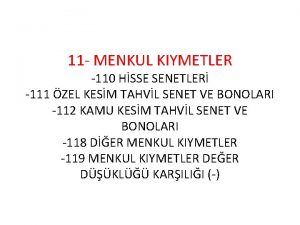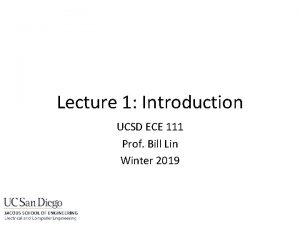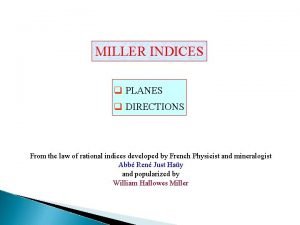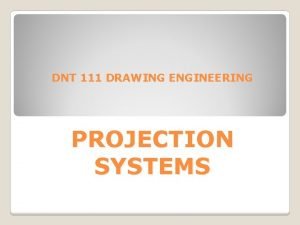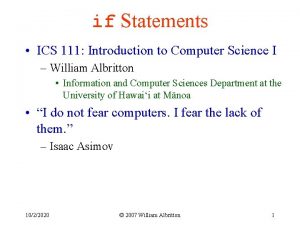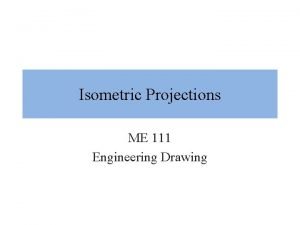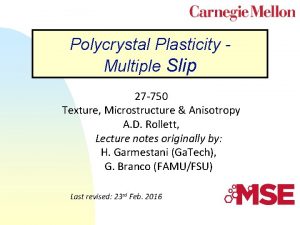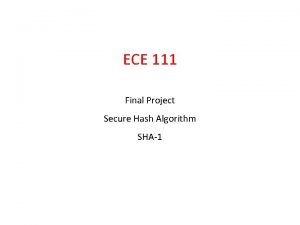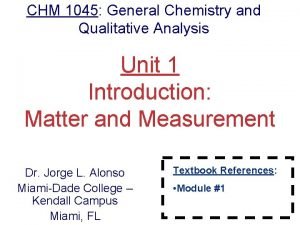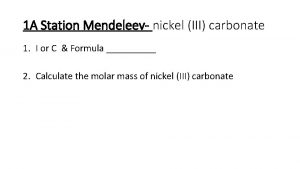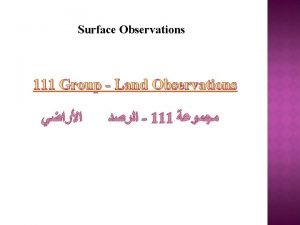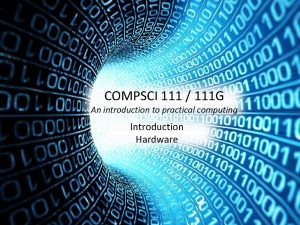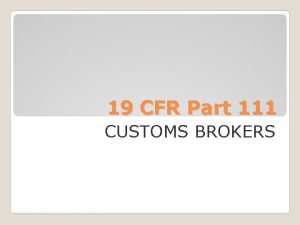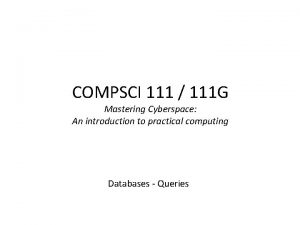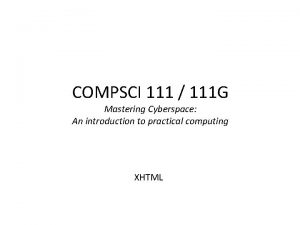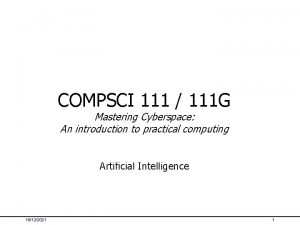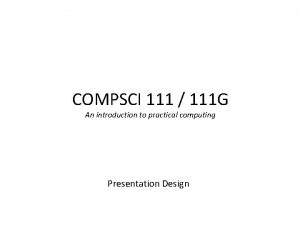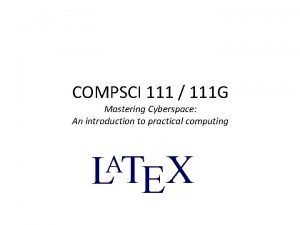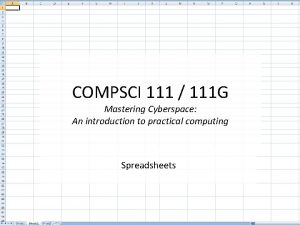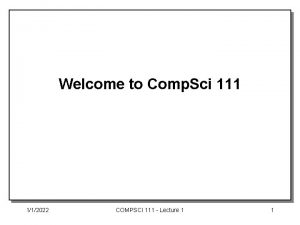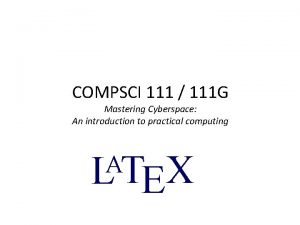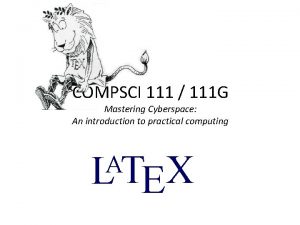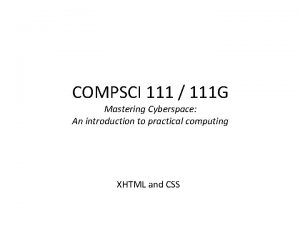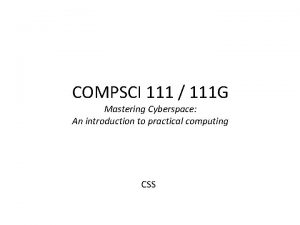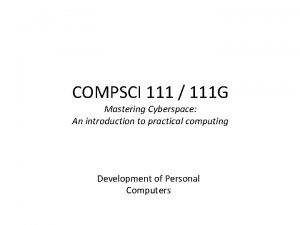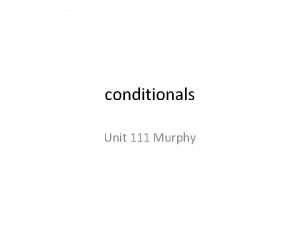Ch 111 12 Ch 111 1 includestdio h










![11 -3 結構陣列(2/2) struct family { char name[10]; int age; }; struct family people[2] 11 -3 結構陣列(2/2) struct family { char name[10]; int age; }; struct family people[2]](https://slidetodoc.com/presentation_image_h/a996cb162818ece89cc750a2e02652e1/image-11.jpg)

![範例 Ch 11_3 (2/3) 11 struct company person[ ] = {{"Mary", 20000, 1500}, 12 範例 Ch 11_3 (2/3) 11 struct company person[ ] = {{"Mary", 20000, 1500}, 12](https://slidetodoc.com/presentation_image_h/a996cb162818ece89cc750a2e02652e1/image-13.jpg)

![11 -4 巢狀結構 • 結構中可以包含結構,而形成一個巢狀結構。如下所 示: struct person { char name[20]; int age; } 11 -4 巢狀結構 • 結構中可以包含結構,而形成一個巢狀結構。如下所 示: struct person { char name[20]; int age; }](https://slidetodoc.com/presentation_image_h/a996cb162818ece89cc750a2e02652e1/image-15.jpg)










- Slides: 25





範例 Ch 11_1 (1/2) Ch 11_1 分離型宣告 1 #include<stdio. h> 2 void main( ) 3 { 4 struct family /*此結構型態名稱為family */ 5 { 6 char name[20]; 7 int age; 8 }; 9 struct family people; /*結構型態family的變數名稱為people */ 10 strcpy(people. name, “John Wang”); /*指定結構的初始值 */ 11 people. age = 18; 12 printf(“Name = %sn”, people. name); /* people. name,指出people的成員 */ 13 printf(“Age = %d”, people. age); /* people. age 以『. 』指出people的成員 */ 14 } 5

Ch 11_1 輸出結果 (2/2) • 程式執行結果 Name = John Wang Age = 18 6


範例 Ch 11_2 (1/2) Ch 11_2 結合型宣告 1 #include<stdio. h> 2 void main( ) 3 { 4 struct family /*此結構型態名稱為family */ 5 { 6 char name[20]; 7 int age; 8 }people; /*結構型態family的變數名稱為people */ 9 strcpy(people. name, “John Wang”); /*指定結構的初始值 */ 10 people. age = 18; 11 printf(“Name = %sn”, people. name); /* people. name,指出people的成員 */ 12 printf(“Age = %d”, people. age); /* people. age 以『. 』指出people的成員 */ 13 } 8

Ch 11_2 輸出結果 (2/2) • 程式執行結果 Name = John Wang Age = 18 9

![11 3 結構陣列22 struct family char name10 int age struct family people2 11 -3 結構陣列(2/2) struct family { char name[10]; int age; }; struct family people[2]](https://slidetodoc.com/presentation_image_h/a996cb162818ece89cc750a2e02652e1/image-11.jpg)
11 -3 結構陣列(2/2) struct family { char name[10]; int age; }; struct family people[2] = {{“John”, 18}, {“Mary”, 20}} • 則其結構陣列可表示如下: char int people[0] name[10] age people[1] name[10] age 佔 10 bytes 佔 2 bytes 11

範例 Ch 11_3 (1/3) Ch 11_3 結構陣列 1 #include<stdio. h> 2 void main( ) 3 { 4 struct company 5 { 6 char name[10]; /* 宣告結構陣列char name[10],然後 7 int salary; 再宣告salary,prize,total為整數型態*/ 8 int prize; 9 int total; 10 }; 12
![範例 Ch 113 23 11 struct company person Mary 20000 1500 12 範例 Ch 11_3 (2/3) 11 struct company person[ ] = {{"Mary", 20000, 1500}, 12](https://slidetodoc.com/presentation_image_h/a996cb162818ece89cc750a2e02652e1/image-13.jpg)
範例 Ch 11_3 (2/3) 11 struct company person[ ] = {{"Mary", 20000, 1500}, 12 {"Jack", 30000, 2000}, 13 {"John", 15000, 5000}, 14 {"Tony", 25000, 2500}}; 15 int i; 16 for(i = 0; i < 4; i++) 17 { 18 person[i]. total = person[i]. salary + person[i]. prize; 19 printf("%s", person[i]. name); 20 printf("%8 d", person[i]. salary); 21 printf("%8 d", person[i]. prize); 22 printf("%8 dn", person[i]. total); 23 } 24 } 13

Ch 11_3輸出結果 (3/3) • 程式執行結果 Mary 20000 1500 21500 Jack 30000 2000 32000 John 15000 20000 Tony 25000 2500 27500 14
![11 4 巢狀結構 結構中可以包含結構而形成一個巢狀結構如下所 示 struct person char name20 int age 11 -4 巢狀結構 • 結構中可以包含結構,而形成一個巢狀結構。如下所 示: struct person { char name[20]; int age; }](https://slidetodoc.com/presentation_image_h/a996cb162818ece89cc750a2e02652e1/image-15.jpg)
11 -4 巢狀結構 • 結構中可以包含結構,而形成一個巢狀結構。如下所 示: struct person { char name[20]; int age; } struct family /*結構family中包含結構person*/ { struct person brother; 則 group. brother. name = Tony struct person sister; group. brother. age = 22 } group. sister. name = Mary struct family group = {{“Tony”, 22}, group. sister. age = 20 {“Mary”, 20}}; 15

範例 Ch 11_4 (1/2) Ch 11_4 巢狀結構 1 #include<stdio. h> 2 main() 3 { 4 struct company 5 { 6 int salary; 7 int prize; 8 }; 9 struct class 10 { 11 struct company person; 12 int total; 13 }p; 16

範例 Ch 11_4 (2/2) 14 p. person. salary = 28000; 15 p. person. prize = 7000; 16 p. total = p. person. salary + p. person. prize; 17 printf("total = %dn", p. total); 18 } • 程式執行結果 total = 35000 17


範例 Ch 11_5 (1/2) Ch 11_5 結構與函數之傳值法 1 #include<stdio. h> 2 struct add { 3 int a, b; 4 }number; 5 main() 6 { 7 int total; 8 static struct add number = {50, 70}; 9 total = sum(number. a, number. b); 10 printf("The result : a + b = %dn", total); 11 } 12 sum(int m, int n) 13 { 14 return(m + n); 15 } 19


範例 Ch 11_6 (1/2) Ch 11_6 結構與函數之傳址法 1 #include<stdio. h> 2 struct add { 3 int a, b; 4 }number; 5 main() 6 { 7 int total; 8 static struct add number = {50, 70}; 9 total = sum(&number); 10 printf("The result : a + b = %dn", total); 11 } 12 sum(ab) 13 struct add *ab; 14 { 15 return(ab -> a + ab -> b); 16 } 21



範例 Ch 11_8 (1/2) Ch 11_8 聯合型態 1 #include<stdio. h> 2 void main() 3 { 4 struct class 5 { 6 int i; 7 char c; 8 }; 9 union score 10 { 11 float b; 12 struct class student; 13 }; 24

範例 Ch 11_8 (2/2) 14 union score a; 15 printf(“size = %dn”, sizeof(union score)); 16 printf(“a. student. i = %dn”, a. student. i = 75); 17 printf(“a. student. c = %cn”, a. student. c = ‘K’); 18 printf(“a. b = %. 1 fn”, a. b = 60. 0); 19 } • 程式執行結果 size = 4 a. student. i = 75 a. student. c = K a. b = 60. 0 25
 110-000-110 & 111-000-111
110-000-110 & 111-000-111 1 num
1 num #includestdio.h
#includestdio.h #includestdio.h
#includestdio.h #includeconio.h
#includeconio.h Conio.h
Conio.h Sur 111
Sur 111 Gn 111-12
Gn 111-12 Ece 111 ucsd
Ece 111 ucsd James rosenquist f-111
James rosenquist f-111 Me-111
Me-111 Tahvil örneği
Tahvil örneği Ece classes ucsd
Ece classes ucsd 111 family of planes
111 family of planes First angle orthographic projection of a bridge
First angle orthographic projection of a bridge Ics 111
Ics 111 Young lions do lack and suffer hunger
Young lions do lack and suffer hunger Psalm 111 1
Psalm 111 1 Iq quartiles
Iq quartiles Isometric view of cone
Isometric view of cone The matrix slipping
The matrix slipping Against nature by joyce carol oates
Against nature by joyce carol oates Sha1 collision
Sha1 collision Chm 111
Chm 111 Nickel(iii) carbonate
Nickel(iii) carbonate

